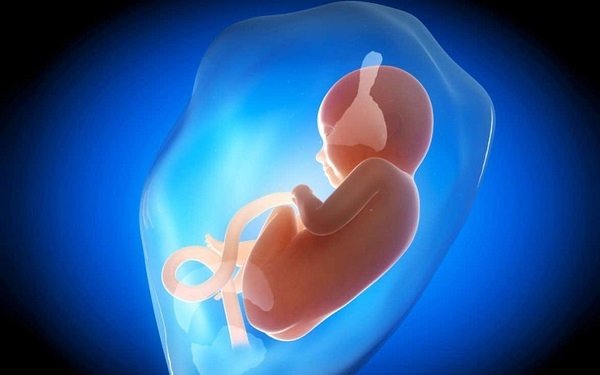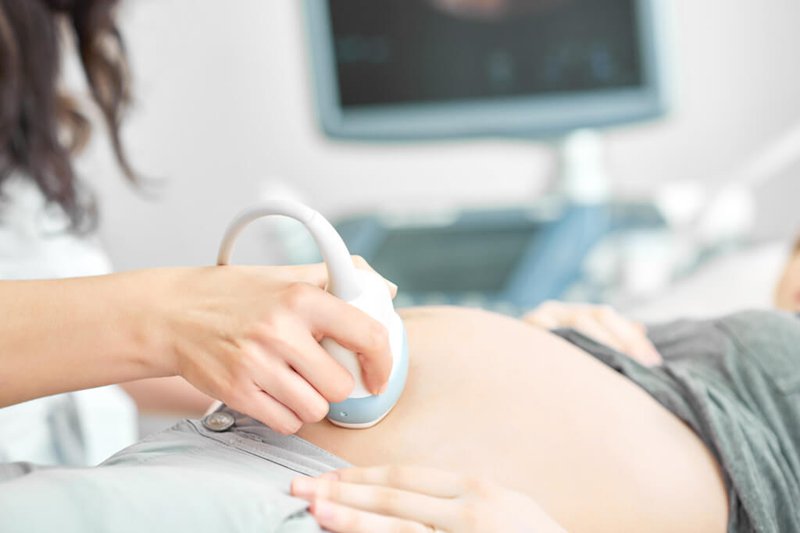Why drink a lot of water but still have little amniotic fluid?
Low amniotic fluid or lack of amniotic fluid (oligohydramnios) is when a woman has too little amniotic fluid. Amniotic fluid is the fluid that surrounds the baby in the uterus. This is very important for the development of the fetus. Because oligohydramnios has many causes, drinking more water may still not resolve low amniotic fluid if other causes of oligohydramnios are not discovered and corrected.
1. What is low amniotic fluid (oligohydramnios)?
Amniotic fluid is the fluid that surrounds the fetus during pregnancy. Located in the amniotic sac, amniotic fluid protects the developing fetus and provides nutrients to the fetus, helping the fetus to mature, develop and maintain a suitable body temperature.
At the earliest stages of development, amniotic fluid is composed mainly of water. At about 20 weeks, the baby's urine becomes the main substance of the amniotic fluid. The baby “breathes” and swallows amniotic fluid; This fluid supports nutrition, growth, lung maturation and the maintenance of fetal body temperature. The volume of amniotic fluid increases as the pregnancy progresses and reaches its peak around the 34th week.
Besides, amniotic fluid also provides a cushion around the baby and the umbilical cord to prevent compression of the umbilical cord. and lack of oxygen to the fetus. Therefore, for whatever reason, a decrease in the amount of amniotic fluid is a serious health risk for the baby.
The amount of amniotic fluid in the uterus is usually assessed by fetal ultrasound. Doctors have studied that the amount of amniotic fluid that a pregnant woman should normally have is between 5 and 20 centimeters. Accordingly, a woman is diagnosed with a condition called oligohydramnios (low amniotic fluid) when there is less than 5cm when measuring the thickness of amniotic fluid.
This can happen at any time during pregnancy, up to 4% of pregnant women are diagnosed with oligohydramnios during pregnancy, but it is most likely to occur during the third trimester. last month. If not detected, corrected or quickly intervened in cases of severe oligohydramnios, the pregnancy can face dangerous complications of oligohydramnios such as miscarriage, stillbirth or premature birth, compression of the fetal umbilical cord. children leading to asphyxia at birth or encephalopathy due to ischemic hypoxia, intrauterine growth restriction, children inhaling meconium...

Một số phụ nữ mang thai gặp tình trạng thiểu ối mặc dù đã uống nhiều nước
2. What causes low amniotic fluid?
oligohydramnios can occur at any time during pregnancy, but is most commonly diagnosed in the third trimester with the following causes of oligohydramnios:
placental problems: if the placenta does not provide enough nutrients for the baby, the baby may stop excreting urine, thereby reducing the amount of amniotic fluid. Birth defects: Some birth defects in the urinary tract and kidneys of the fetus, resulting in insufficient urine production. Premature rupture of membranes: When water breaks before labor begins. Amniotic fluid leakage: A ruptured amniotic membrane can cause amniotic fluid leakage. Overdue pregnancy: A pregnancy from over 42 weeks is at risk of oligohydramnios because the amount of amniotic fluid can be halved after this point. Maternal problems: Maternal conditions, such as diabetes, dehydration, high blood pressure, and preeclampsia, affect the amount of amniotic fluid. In addition, in some cases, a woman may have oligohydramnios without any obvious cause being identified. Thus, if the mother is dehydrated, this is only one possible cause of oligohydramnios; Accordingly, this will answer the question in many women as to why drink a lot of water but still have little amniotic fluid without excluding other possible causes. Therefore, it is important for doctors to monitor the amount of amniotic fluid throughout pregnancy at the time of the prenatal visit.
3. Signs and symptoms of oligohydramnios
Signs and symptoms of oligohydramnios are different from person to person, the most common are:
Leaking amniotic fluid Amniotic fluid rarely on ultrasound Small-than-normal measurements for gestational age Mother less weight gain Labor early Abdominal discomfort Sudden decrease in fetal heart rate Fetal movement little or no fetal movement Abnormalities detected on fetal monitor, including fetal distress However, the diagnosis of oligohydramnios is based on the evidence of ultrasound. A fetal ultrasound that diagnoses oligohydramnios is done with a measurement known as the amniotic fluid index, which measures the depth of amniotic fluid in the four parts of the uterus and adds them together. The doctor can perform objective measurements to diagnose oligohydramnios when the amniotic fluid index is less than 5. In addition, the doctor can also use the dye dilution method to quantify the amniotic fluid volume as well as the amniotic fluid volume. decreasing trend of amniotic fluid over time.

Chuyển dạ sớm là dấu hiệu của thiểu ối ở mẹ bầu
4. How to increase the amount of amniotic fluid in oligohydramnios?
There is no long-term treatment for oligohydramnios. However, a few things can be used to temporarily increase the amount of amniotic fluid:
Drink plenty of water : Your doctor may advise women to drink more water than usual if they have oligohydramnios. The type of water that can be selected is filtered water, mineral water, fruit juice, including coconut water, eating liquid food such as soup, soup. In general, oral administration of water is the simplest option, but in some cases, intravenous isotonic fluid supplementation may be necessary.
Amniotic fluid infusion: This is how saline solution is pumped into the amniotic sac during labor. During this procedure, doctors use a catheter in the amniotic membrane to add fluid to the chamber. This can help reduce the risk of compression of the umbilical cord, a dangerous complication that can be experienced during labor.
Amniotic membrane patching: if membranes leak
However, it is important to note that the above interventions are only temporary and do not treat the underlying cause of oligohydramnios. In many cases, if oligohydramnios is likely to pose a threat to the utero circulation to the fetus, an indication for pregnancy by caesarean section needs to be rapidly established.
In summary, oligohydramnios or low amniotic fluid is a condition in which the amniotic fluid measured is lower than the expected gestational age of the baby. While no treatment has been shown to be effective in the long term, short-term improvement in amniotic fluid status by drinking plenty of water may be advisable. However, it is important to monitor the progress of amniotic fluid in the uterus as well as the health of the fetus for timely intervention.
At Vinmec International General Hospital, there is a package maternity service as a solution to help pregnant women feel secure because of the companionship of the medical team throughout the pregnancy. When choosing Maternity Package, pregnant women can:
The pregnancy process is monitored by a team of qualified doctors Regular check-up, early detection of abnormalities Maternity package helps to facilitate the process. Birth program Newborns receive comprehensive care For consultation and examination at Vinmec health system nationwide, please register at the Website for the best service.
Để đặt lịch khám tại viện, Quý khách vui lòng bấm số HOTLINE hoặc đặt lịch trực tiếp TẠI ĐÂY. Tải và đặt lịch khám tự động trên ứng dụng MyVinmec để quản lý, theo dõi lịch và đặt hẹn mọi lúc mọi nơi ngay trên ứng dụng.
Bài viết này được viết cho người đọc tại Sài Gòn, Hà Nội, Hồ Chí Minh, Phú Quốc, Nha Trang, Hạ Long, Hải Phòng, Đà Nẵng.






